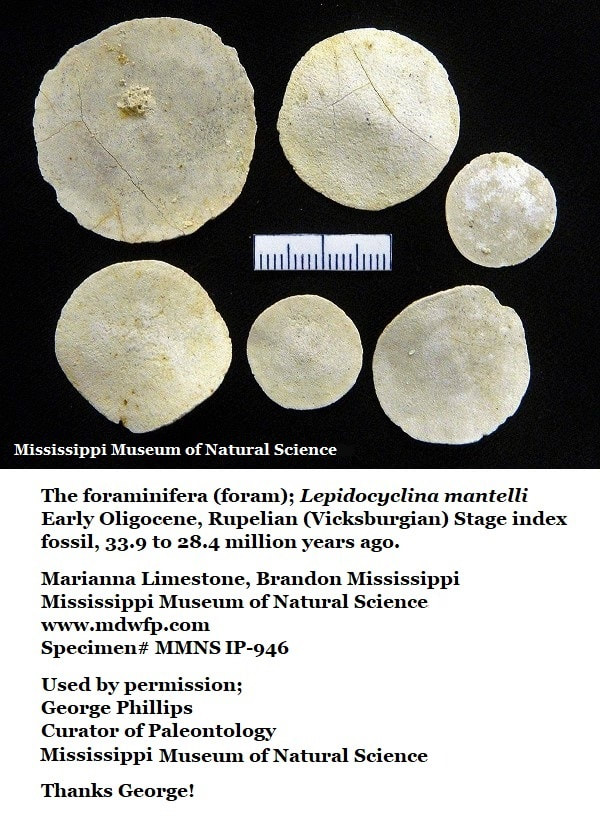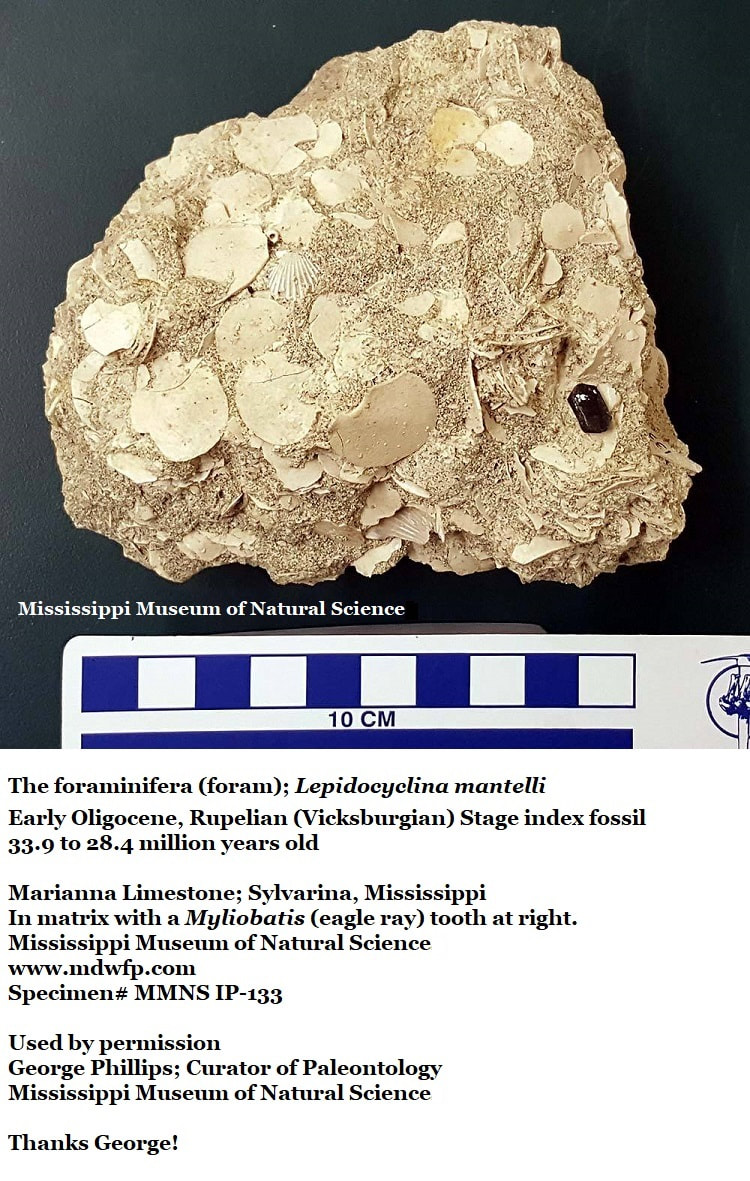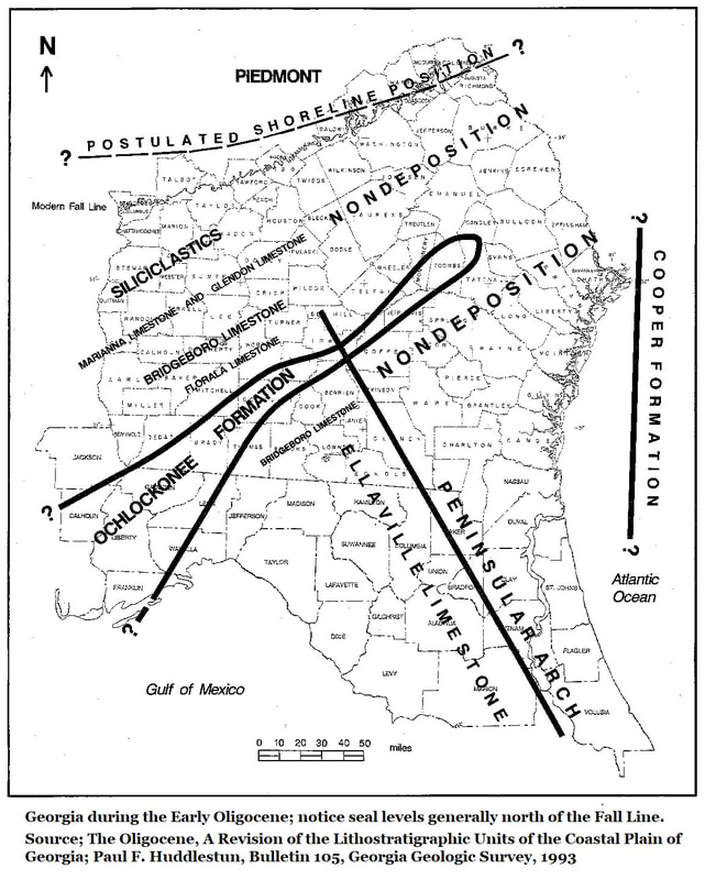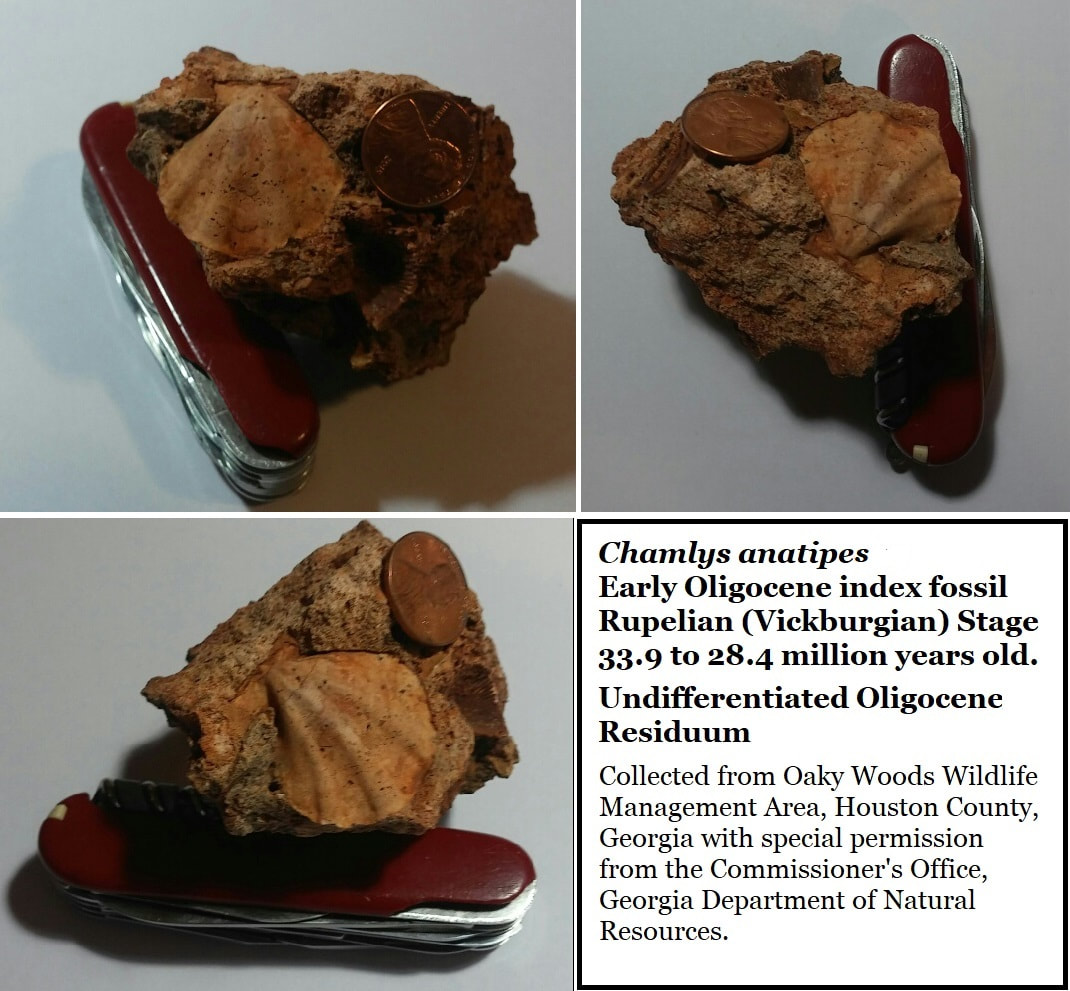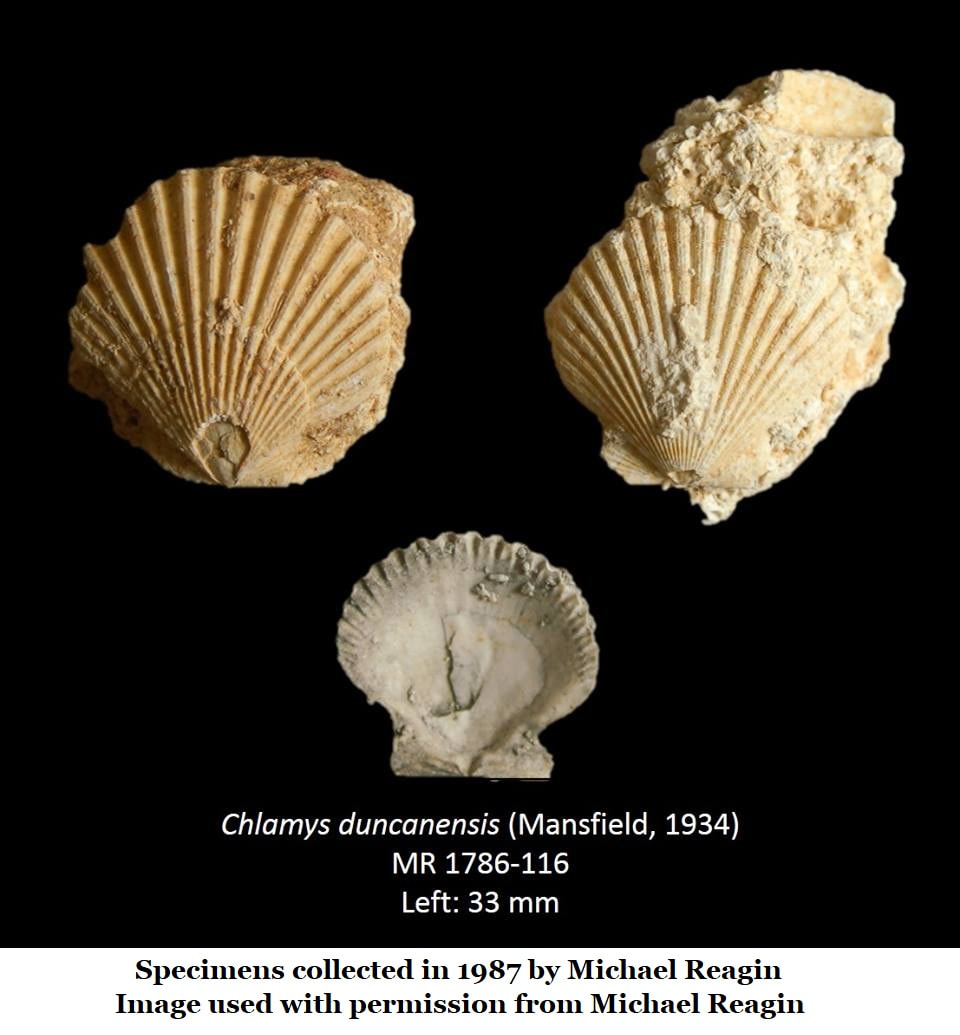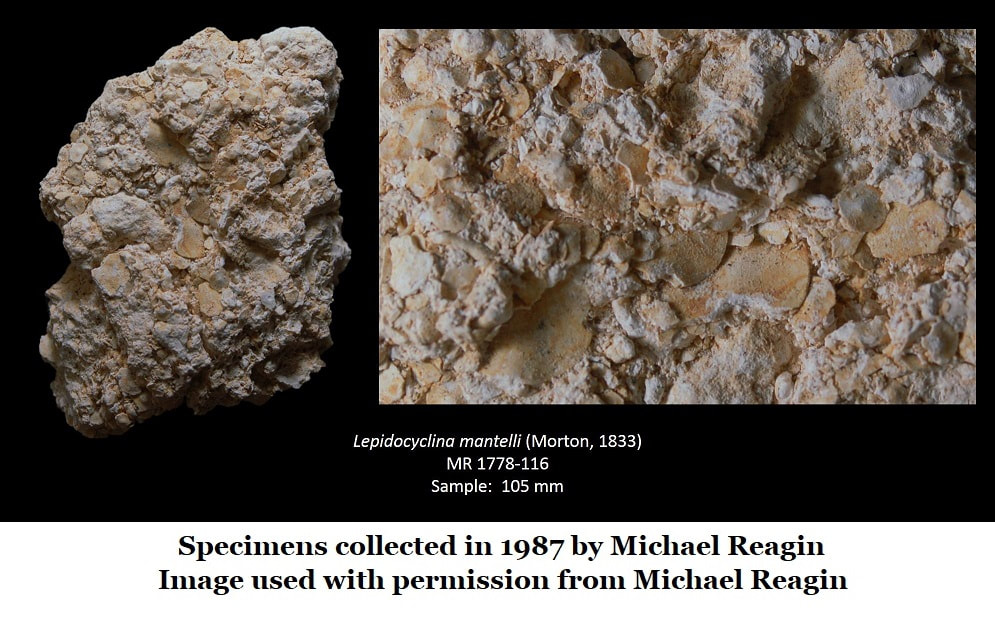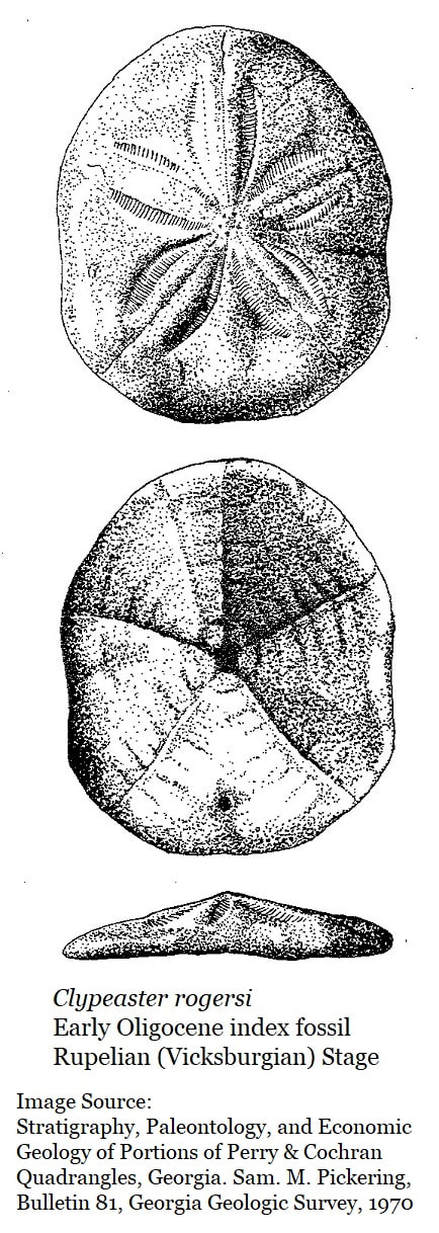15: The Early Oligocene Sediments
33.9 Million Years Ago
33.9 Million Years Ago
The Oligocene Epoch covers 33.9 to 23.03 million years ago.
It breaks down into two stages.
Late Oligocene
Chattian Stage (Chikcasawhayan) 28.4 to 23.03 mya
Early Oligocene
Rupelian Stage (Vicksburgian); 33.9 to 28.4 mya
It breaks down into two stages.
Late Oligocene
Chattian Stage (Chikcasawhayan) 28.4 to 23.03 mya
Early Oligocene
Rupelian Stage (Vicksburgian); 33.9 to 28.4 mya
The long, warm Eocene Epoch ended with a glacial event which saw a sea level drop of approximately 55 meters or 180 feet, this unfolded over roughly a two-million-year period. Coastlines retreated from near the Fall Line to the Continental Shelf and a global extinction event occurred.
In Europe this is known as the Grand Coupure, and though moderate by the standards of previous extinction events there was a major turnover in animal and plant species, and this hit freshwater and marine systems hard. Mammals also took some big hits. Many warm climate mammals, including the basilosaurids and brontotheres, met extinction. This allowed cold adapted mammals to become established and diversify.
We’ve looked at the roughly 34 million year old The Late Eocene Ocmulgee Formation and Tobacco Road Sand in Houston County’s Oaky Woods Wildlife Management Area (See Section 13G of this site) which represents a barrier island environment at the very end of the Eocene Epoch, just before the extinction event.
Now we’ll look at Georgia’s fossil record after the extinction event. At 33.9 million years ago the glaciation ended, the global climate warmed again and sea levels ramped up to near previous coastlines. Research shows that coastlines during the Early Oligocene stood well north of the Fall line in western Georgia and at or just south of the Fall line in eastern Georgia. This return of sea levels marks the opening of the Oligocene Epoch.
As the lead Coastal Plain researcher for the Georgia Geologic Survey, Paul F. Huddlestun published an in-depth report over the Oligocene in 1993. (1)
He established the Vicksburgian Group of sediments based on the presence of index fossils restricted to the Early Oligocene. The Vicksburgian Group is diverse in both character and depositional environments but tells us a great deal about the extent and character of sediments after the Grand Coupure.
Early Oligocene, Rupelian (Vicksburgian) Stage Index Fossils
Clypeaster rogersi
Paraster americanus
Chlamys anatipes
Chamlys duncanensi
Lepidocyclina mantelli
As the lead Coastal Plain researcher for the Georgia Geologic Survey, Paul F. Huddlestun published an in-depth report over the Oligocene in 1993. (1)
He established the Vicksburgian Group of sediments based on the presence of index fossils restricted to the Early Oligocene. The Vicksburgian Group is diverse in both character and depositional environments but tells us a great deal about the extent and character of sediments after the Grand Coupure.
Early Oligocene, Rupelian (Vicksburgian) Stage Index Fossils
Clypeaster rogersi
Paraster americanus
Chlamys anatipes
Chamlys duncanensi
Lepidocyclina mantelli
References
The Oligocene, A Revision of the Lithostratigraphic Units of the Coastal Plain of Georgia; Paul F. Huddlestun, Bulletin 105, Georgia Geologic Survey, 1993
Stratigraphic, Paleontology, and Economic Geology of Portions of Perry and Cochran Quadrangles, Georgia; Sam M. Pickering, Bulletin 81, Georgia Geologic Survey, 1970
The Oligocene, A Revision of the Lithostratigraphic Units of the Coastal Plain of Georgia; Paul F. Huddlestun, Bulletin 105, Georgia Geologic Survey, 1993
Stratigraphic, Paleontology, and Economic Geology of Portions of Perry and Cochran Quadrangles, Georgia; Sam M. Pickering, Bulletin 81, Georgia Geologic Survey, 1970
